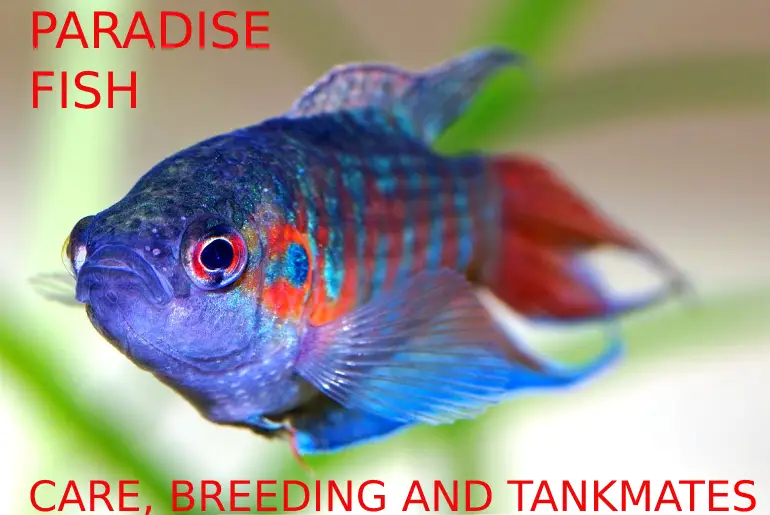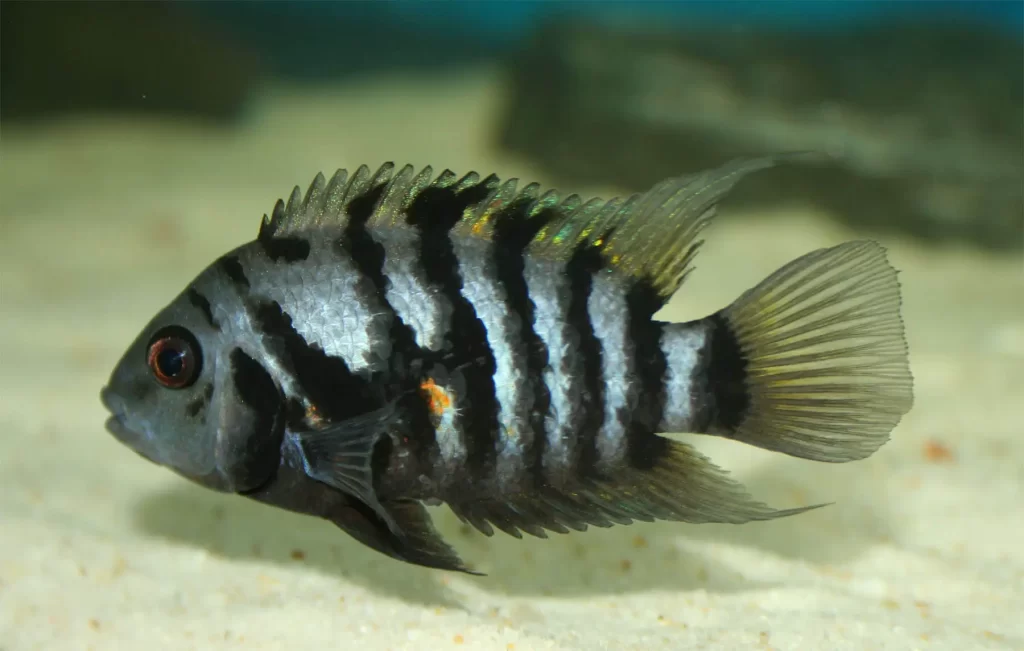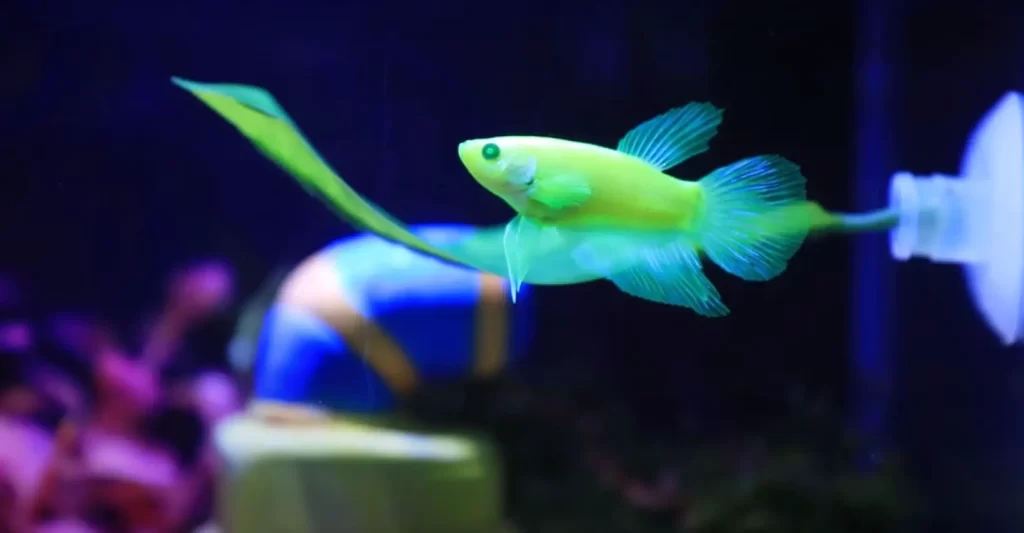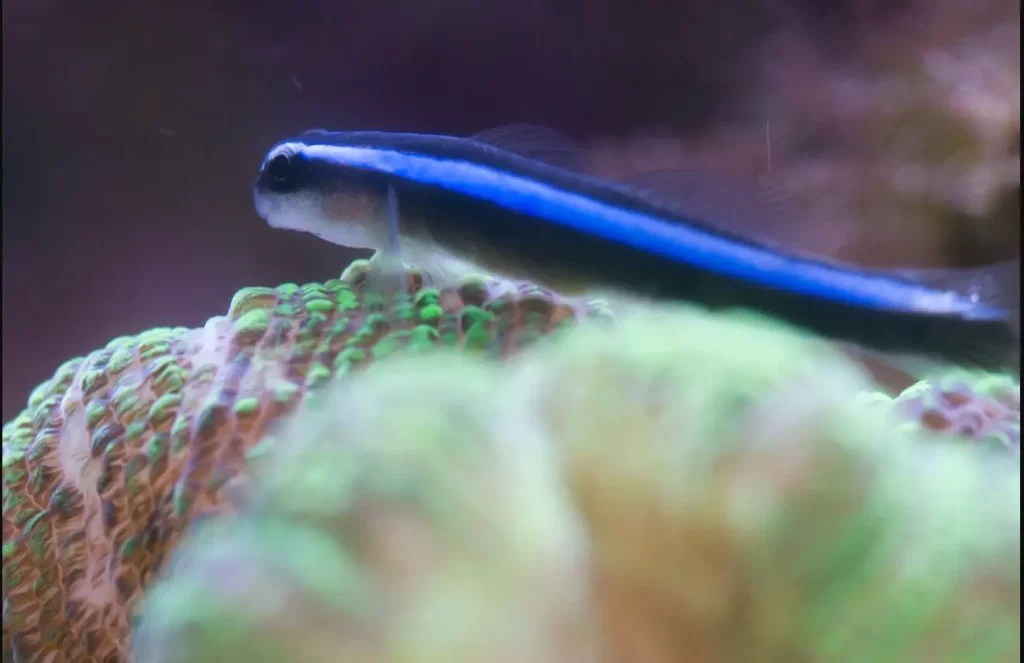Are you thinking of getting beautiful new species of fish? And wondering about getting the fish which has a beautiful pattern! Paradise fish or Paradise Gourami would be a great choice for your tanks.
Paradise fish are so elegant that their beauty would be intensified when you see them swimming in your tank. It will be a treat for your eyes every time you look at it.
But, not sure what to do and care for paradise fish. As it is said that for every problem, there is a solution.
So, here I am again to help you with details you should know about Paradise fish. I will be writing in this article about the paradise fish’s habitat, care, tank mates, requirements. Moreover, breeding procedure with care for fry and much more details that you should know.
| Image | Best Products For Tetra | Link |

|
Tetra Aquarium 20 Gallon Fish Tank Kit, Includes LED Lighting and Decor |  |
 |
12 Pounds River Rock Stones, Natural Decorative Polished Mixed Pebbles Gravel, Outdoor Decorative Stones for Plant Aquariums, Landscaping, Vase Fillers |  |
 |
NICREW ClassicLED Aquarium Light, Fish Tank Light with Extendable Brackets, 48-Inch, 32 Watts |  |
 |
Carib Sea ACS05840 Super Naturals Crystal River Sand for Aquarium, 5-Pound |  |
 |
HIKARI Bacto-Surge Foam Filter Mini |  |
 |
API Aquarium Test Kit |  |
 |
Zeiss 67mm T (UV) Ultraviolet Filter |  |
 |
Tetra Whisper Easy to Use AP150 Air Pump for Aquariums |  |
Quick Facts
| Scientific Name | Macropodus opercularis |
| Other Names | Paradise gourami, Paradise Fish, Chinese Fighting Fish |
| Origin | Southeast Asia, China |
| Care Level | Easy, Suited for beginners |
| Life Span | 4 to 5 years sometimes longer |
| Diet | Omnivorous |
| Size | Up to 4 inches or 10 cm |
| Tank region | Middle to top |
Habitat In Wild
The Natural Habitat of the paradise fish is the south region of China, i.e., Yangtze River of Hainan Island and Taiwan, Ryukyu Islands, Japan, central and northern Vietnam, Korea, Cambodia, Malaysia, and north eastern part of Laos. Besides, they are also thought to be found in the United States and Madagascar.
However, paradise fish are mostly found in lowland habitats having warm, stagnant, and slow-moving water conditions. Thus, they are found in streams, oxbow lakes, blackwater rivers, irrigation canals, rice paddies as well as in artificial reservoirs.
However, you could also find Paradise fish at higher altitude with cold, fast-flowing freshwater. Though, I would not recommend that for their final environment.
You might also like our article on Top 8 Easy To Care Cold Water Aquarium Fish.
Appearance Of Paradise Fish
Paradise fish are very beautiful fish as they have colorful patterns on their body. Not only that, but the brownish or greenish-brown with green and red stripes over their body is pleasant for your eyes to look at.
When the water temperature rises, the color looks brighter and beautiful. Besides, you can also find the elegance of the fish during the mating season.
Like all climbing perches species, the paradise fish’s body is also flattened from sides. If you could give a replica of a natural habitat to live in, they would grow up to the size of 10cm or 4 inches. However, the size of female paradise fish is smaller than males i.e. female size is 8cm.
Although the fish is small in size, it has long fins that flow while they swim. You would see dorsal and anal fins are mimic each other and facing back past the caudal peduncle, having a very thin stripe at the edge.
You might also be interested in Small Tropical Fish That Does Not Require Much Space.
The paradise fish also has tiny ventral fins that dangle while they swim. Hence, the paradise fish looks beautiful. And, caudal fins are forked, having a large surface in the center.
Paradise fish are also called Paradise Gourami as they have features of gourami fish. As a result, they have pointed heads along with a torpedo body.
Find more about Gourami Fish Diseases and Treatments.
Tank And Maintenance
You might be wondering how to take care of your fish at your home. How to manage the favorable condition for paradise fish?
Here I will be explaining all requirements that you will need for your fish. And, I would mention and suggest a few types of equipment as well for the betterment of habitat. Therefore, stick with me by the end of this article for detail on the environment for your fish.
Tank Size
It is always better to have a bigger space for your fish to be comfortably comfortable. Therefore, the minimum tank size for a paradise fish should be around 20 gallons. And, this will also allow you to include other additional decorations in the tank.
If you are planning to include a few more of them together, it would be wise of you to add 10 gallons to the tank size. As a result, the aggression and territorial nature of paradise fish will be balanced or controlled to some extent.
Water Parameter
Water parameter is something you must take care of properly to allow your Paradise Gourami to thrive in captivity. So, you should manage the water having the following level of parameters.
| Factor | Minimum | Maximum |
| Water Temperature | 68F | 80F |
| pH Level | 5.8 | 8 |
| Water Hardness | 5 dGH | 30dGH |
| Water Flow | Slow or calm | |
Paradise fish may calmly tolerate the temperature change. However, you still want to be careful about the water parameter to the ideal range as even a sudden shift could cause health problems. Keep in mind stability is key.
More articles about water parameters in the aquarium you may like:
- Cloudy Water in Aquarium: Causes and Prevention
- Maintain Aquarium Water Hardness – Freshwater Aquarium Guide
- How To Stop Water Evaporation In My Aquarium? : Causes And Remedies
Tank Decor
And yes, tank decoration is also important for making your aquarium look beautiful. So you should keep in mind that while decorating the fish tank, you do it by considering the fish requirement.
As you keep reading this article, you will find all details about the decor that you can use for your fish. Moreover, I would also suggest some interior types of equipment.
Substrate
You must give your fish a favorable environment to thrive. So, why not start with the base of the aquarium. You can use the river pebbles or coarse sand for the bottom or base of the aquarium to give the natural vibe in captivity.
The color of the fish looks brighter and exotic on a darker background. Therefore, you can scatter the bottom of the aquarium with the dark marble chips.
And, make sure the height of the soil or base should not be more than 4 cm.
Lighting
Paradise fish prefers subdued lights in their environment. Therefore, you should get a light system which can be easily adjusted as per requirement.
You can also use dense plants to the upper layer of water to make the aquarium darker during day time. And you can also cover it with a tight lid.
Why Do I Need A Lid For My Fish Tank? Here Are My 5 Reasons
If you do as I said above, then there is not much worrying to do even at breeding time.
Plants
Paradise fish prefer densely planted tanks with tons of natural vegetation. Therefore, you must include plants with floating plants as well. But, make sure you leave space on top as they have labyrinth organs, which they use to get surface air.
If you have multiple paradise fish, the plants allow each fish to set a boundary as their territory border and sight blocker. Therefore, you must include plants.
Learn about Fish to Avoid For A Planted Aquarium and 9 Best Low Light Aquarium Plants | Benefits of Aquarium Plants
Moreover, a proper plantation in the aquarium is a must if you want to breed in the future. So, here I have listed a few plants that would be best for Paradise fish.
| Plant | Growth | Placement | Link |
| Hornworts | Fast | Weighted or Floating |  |
| Guppy grasses | Rapid | Floating, Weighted, Planted |  |
| Java Moss | Moderate | Floating or attached |  |
| Salvinia | Fast | Floating |  |
| Water Wisteria | Slow | Basically, anywhere. |  |
| Duckweed | Moderate | Floating |  |
Tank Mates For Paradise Fish
When you are thinking of schooling paradise fish with other fish, always go for such species that can do well at room temperature. Moreover, tank mates should like a low flow environment and fast enough to deal with aggression.
I will list out some of the tank mates that you can keep together.
| Species | Temperament |
| Bristlenose plecos (Ancistrus sp.) | Peaceful may be territorial |
| White Clouds (tanichthys albonubes) | Peaceful shoaling |
| Asian Stone Cat (Hara Jerdoni) | Shy and peaceful |
| Cherry Barb (Puntius Titteya) | Active and peaceful |
| Zebra danio ( Brachydanio Rerio) | Peaceful and active |
| Buenos Aires Tetra (Hyphessobrycon Anisitsi) | Active and outgoing |
| Corydora (Corydora sp.) | Can be boisterous for less active species, yet peaceful |
| Ghost Shrimp (Palaemonetes paludosus) | Peaceful and active |
| Amano Shrimp (Caridina Multidentata) | Active and shy |
| Japanese Rice Fish ( Oryzias latipes) | Shy and peaceful |
| Bala Sharks | Active |
| Synodotis Catfish | Active and peaceful |
Another thing you must keep in mind is that you should not pair them up with similar-looking fish. Therefore, gourami, betta, most rainbowfish species, etc. should be avoided.
You should also avoid fish smaller than 1.5 inches because paradise fish may consider them snacks. Moreover, avoid pairing paradise fish with other slow eaters and shy fishes.
Things To Care For Your Paradise Fish
If you want to keep you for a longer time in your aquarium, then you must take care of the fish. It is always wise and responsible to be while you have fish in your tank.
Here are the few factors that should be taken care of for your fish in your aquarium.
Feeding Paradise Fish
Paradise fish are predators in their natural habitat. They hunt smaller fishes, as well as other tiny aquatic animals such as planktonic invertebrates and zoobenthos.
But, paradise fish will also subsist on an omnivorous diet and are unfussy with food. You can feed them the following listed food.
- Freeze-dried tubifex: San Francisco Bay Brand/Sally’s Freeze-Dried Bacteria Free Tubifex – 4 oz.
- Frozen bloodworms: SAN FRANCISCO BAY Brand Freeze Dried Bloodworms 1.75oz
- Freeze-dried blackworms: Aquatic Foods Inc. Blackworms, Loose Freeze Dried California Blackworm 10gram
- Frozen Mysis shrimp: San Francisco Bay Brand Freeze Dried Mysis Shrimp 3.35oz
- Golden pearls: Aquatic Foods Inc. AFB Golden Pearls, 5-50 Microns Golden Pearls for Corals, Reef Tanks, Fry & Babies.1/8-lb
- Bug bites: Fluval Bug Bites Cichlid Fish Food, Pellets for Medium to Large Sized Fish, 3.53 oz., A6581
- White worms: Aquatic Foods Inc. Freeze Dried White Worms – Freeze Dried, Great for Smaller Tropicals and Marines.1/8-lb
- Daphnia: 1000+ Live Daphnia Magna
- Wingless fruit flies: Josh’s Frogs Melanogaster Fruit Fly Culture Kit (Makes 10 Cultures)
- Brine shrimp: Omega One Freeze Dried Brine Shrimp, 1.28 oz
- Vibra bites: Hikari Vibra Bites (9.8oz), Red.
Paradise fish often beg to be fed and would eat until they explode. So, be careful you don’t overfeed them. Therefore, you can feed them little by little every so often to avoid overfeeding. And, live frozen, and live food is best before breeding.
Learn more on Obesity in Aquarium Fish: Are You Overfeeding Your Fish?
Disease
It is always smart enough to be aware of the health issue that could cause your fish uneasiness or discomfort. Since paradise fish can easily live with a slight change in water parameters, there are not many issues about health. However, paradise fish is vulnerable as well, with some diseases that could happen. So, I will mention a few diseases that you should be aware of in the future.
| Disease | Symptom | Causes |
| Lymphocystis (LCDV) |
|
|
| Costia |
|
|
| Bloat |
|
|
| Fin Rot and Tail Rot |
|
|
| Constipation |
|
|
Filtration
If you want your fish to thrive in captivity, make sure you are maintaining the water purity as per requirement. Though fish do not require ventilation, it is better to have 4 to 6-inch space from cover and water level.
The color and health of fish will be good when the water quality is as per standard. Therefore, you should install filters in aquariums. Also, keep in mind that the filter does not make water movement a lot.
Hikari Sponge Filter, Ziss bubble Filter, Tetra whisper air pump are some filters I would suggest installing.
Water Care
20% of the volume of the aquarium should be changed weekly. As a result, the water gets inhabitable for the fish. Most of the fish cannot do well with ammonia, nitrites, or nitrates, but paradise fish are quite tolerant.
Is Too Much Water Change Harmful For Your Fish: How To Do It Safely? Find out here.
Like other fish, paradise fish prefer no chlorine and heavy metals from their water sources. I would suggest de-chlorinator, aquarium salt, potassium salt (PP), and maracyn-2 for proper care of water.
Breeding Of Paradise Fish
Anyone can easily carry on the breeding procedure just in their home aquarium environment. So, if you want to breed paradise fish, then here I am with a full detailed guide. Additionally, I will also mention the fry and how to care for them till Paradise fish are adults.
Preparation For Breeding
First of all, you should be very careful with preparation for breeding, as the paradise fish would want a proper environment for breeding.
Make sure you have a separate tank for the breeding session. However, you can breed in the same tank where you keep them but manage at least 20 gallons in a large tank.
Find out in detail about The Easiest Way to Set up a Fry Tank: New Born Fry Care.
The water level can be decreased to 6 to 8 inches, and the water temperature can be maintained up to the high 70’s or low 80’s.
And, I have already mentioned in the previous section, keep the tank clean, feed them with a healthy diet making sure both fish have no disease to eliminate stress.
Get into the details about How to Clean And Maintain Aquarium? – The Easiest Way and Why Do Fish Tanks Get Dirty So Fast – How To Clean And Maintain Tanks
Mating Period
It is simple, but the male aggression complicates the whole mating session. However, you do not have to worry while you keep a watch on them.
The mating mood of the fish can be noted when you see the male start to construct a bubble nest by blowing. During this time male gets aggressive if the female approaches before he has done with bubbles( for laying the egg). And, the female abdomen seems to be rounded filled with eggs.
When the male is done with the bubble nest, slowly, the female approaches near the nest and along with her male too. Then you will see the male wrap his body around the female’s body, fertilize the egg, and release the egg about 80-200 eggs.
Meanwhile, if any of the eggs are sinking, then the male holds it and blows it to the nest and again continues the spawning.
Removing Female Fish
As soon as all the eggs are released by the female, the male starts to arrange the eggs in the bubble nest. Male paradise fish is protective towards the eggs and would not want any other fish to come near its nest.
Therefore, you must remove the female paradise fish out of the tank as the male will chase away the female. However, you do not have to remove it if your tank is large enough. But, I would suggest removing both the parents after the eggs are hatched.
Hatch And Fry
Once the eggs are safe in the bubble nest, the fry would take around 30-90 hours to hatch. Hence, removing both parents one after is necessary for fry to live. Alternatively, you can raise in a separate tank to raise the fry.
Care For Fry
Breeding Paradise fish does not only mean breeding the male and female paradise fish. Hence, after breeding the fish, caring, and nourishing is another factor that you take care of properly.
Wondering what and how to care? You are a few sentences away to know about the proper care for successful breeding.
Temperature And Hatching Time
According to a few experts inbreeding, for successful breeding to take place, the temperature is a prime factor. Therefore, you must maintain the temperature steady at 80F for the best result and egg to hatch in the best condition, which takes around 48 hours.
Next 48 Hour
And for the next 48 hours, you would not more than black hair like thing dangling down from the nest after hatching eggs. The fry has to remain in the nest until and unless they could swim. Therefore, you may often see the male fish hold the fallen fry and blow them back to the nest.
The fry feeds on their yolk sacks before they are ready to swim. Therefore, the fry does not require food as long as they are in the nest.
On Fifth Day
By the fifth day, you will see a free cloud of tiny fry swimming around the male paradise fish. The male paradise may not usually eat the fry, but it’s best to remove the male as well.
And, now they are able to eat. So, they start to feed on tiny organisms in the tank.
Feeding
Infusoria is a perfect food for the new swimming fry. Therefore, for the first week, once the fry could swim, you could feed them with the infusoria. Here are two simple methods to prepare infusoria for the fry.
Making of infusoria
You can use two methods to prepare infusoria, as I have mentioned below, which is very simple.
- Method-1
You can easily cultivate infusoria just by putting lettuce or spinach leaves in a jar with a few snails and aquarium water. As soon as the leaves decay, you would see snails eating the rotting green. As a result, the infusoria is developed by their droppings from the snail bites.
Now, you are ready to put this water into the aquarium where your fry is placed to seed it with infusoria.
- Method -2
And the next method is as simple as the first one, and you just have to take an open jar of aquarium water. Place a piece of lightly boiled potato in it.
You will see cloudy water with infusoria within 8 days. Thus, you can use the jar by just pouring some of the cloudy water into the tank to feed the fry. Having about a few cultures going at any single time should keep your fry supplied with food. Simple, easy, and no mess!
After a week of infusoria, you can switch to micro worms.
Third To Fourth Week
By the third and fourth week, the fry is grown well and could eat almost all small fish food such as crumbled flake food. You should feed your fish several times a day for the next 5-6 months. You will have nice fish to gift your hobbyist friend and could even sell to a local fish store. Happy breeding!
Frequently Asked Questions
How Can You Tell If A Paradise Fish Is Male Or Female?
Paradise fish gender can be identified by observing the main four factors, i.e., coloration, finnage, aggression.
Generally, males have brighter, more blue markings and intense orange. Despite they have varieties of colors yet, they will have more intense colors than females.
Moreover, male paradise fish has larger fins compared to female. Additionally, the fins are pointed in male.
You can also differentiate gender just by observing the most aggressive one be male.
Do Paradise Fish Need An Air Pump?
Installing an air pump in the aquarium does not do well as the fish can easily cope up in low oxygen water with their labyrinth organ. On the other hand, the air pump leads to the movement of water in your tank, which is not liked much by the paradise fish. So, keeping an air pump is not something you need.
How To Maintain The Oxygen Level In Aquarium? Find out here.
Can You Put Goldfish With Gouramis?
It would not be that easy to keeping goldfish and paradise gouramis together. However, it won’t make it that difficult in a way you cannot pair them up as the temperament are similar, and both are surface breathers. Yet again, it’s challenging to school goldfish and paradise in the same tank due to the environmental factors. But, you would not have much problem, so you should pair them with a little more care.
Are Paradise Fish Aggressive?
Paradise fish is the most aggressive one from the three spot gourami. Therefore, the fish also tends to be territorial. If you pair them with other small fishes and with long fins, then you would notice a lot of aggression in the aquarium. So, it is considered that paradise fish should be paired up wisely.
Conclusion
And finally, I would like to drop a few words.
Paradise fish are very elegant fish with elongated tip fins, overwhelming to look at while swimming. The color pattern of paradise fish that shine in darker substrate would please your eyes every time you look at it!
Therefore, you would want them to keep them with proper care with all the care from managing water parameters. And you can also use other meds I have suggested above.
Hope above all details will help you to care for your fish and also breed the fish. I m pretty sure that you would also be successful in caring for fry and fish.
Do not forget to write comments.
Related articles:






